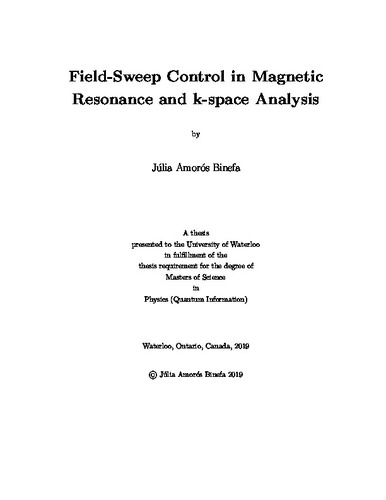| dc.description.abstract | In a general magnetic resonance experiment, resonant radiofrequency or microwave fields are applied to an ensemble of electron or nuclear spins to determine their magnetic interactions with their local environment. These interactions cause a wide range of fre- quencies to be present in the excitation response of the spin system. Characterizing the frequency spectrum of the response reveals detailed information about the physical and magnetic structure of the spin sample, allowing a diverse range of applications, including chemical process monitoring, molecular structure determination, imaging, and quantum information processing.
In most applications, a broadband resonator is used to excite and detect the spin response to reconstruct the spectrum in an unbiased way. Recently, however, there has been an increased interest in enhancing detection sensitivity by using narrowband (high Q) resonators. Many samples of interest have a spectral breath that exceeds the bandwidth of high Q resonators, making efficient excitation and detection of the spectrum challenging. In this thesis we propose the addition of a z-control field to perform a single-shot measurement of broad spectra. With a thorough numerical and experimental analysis, we show how sweeping the z-control during both a Hahn echo sequence and the detection of the resulting echo, allows accurate and efficient spectral reconstruction even in the presence of bandwidth limitations.
Moreover, the k-space formalism widely used in NMR and MRI is extended to describe the evolution of magnetization under the effects of any type of inhomogeneous broaden- ing. In particular, a set of coupled recursive equations characterizing the action of soft multipulse sequences on the evolution of the magnetization is derived. We relate it to the k-space grating or reciprocal picture, and perform an order analysis of the paths. By then taking the limit of pulse length to zero, non-linear response theory is retrieved. | en |

